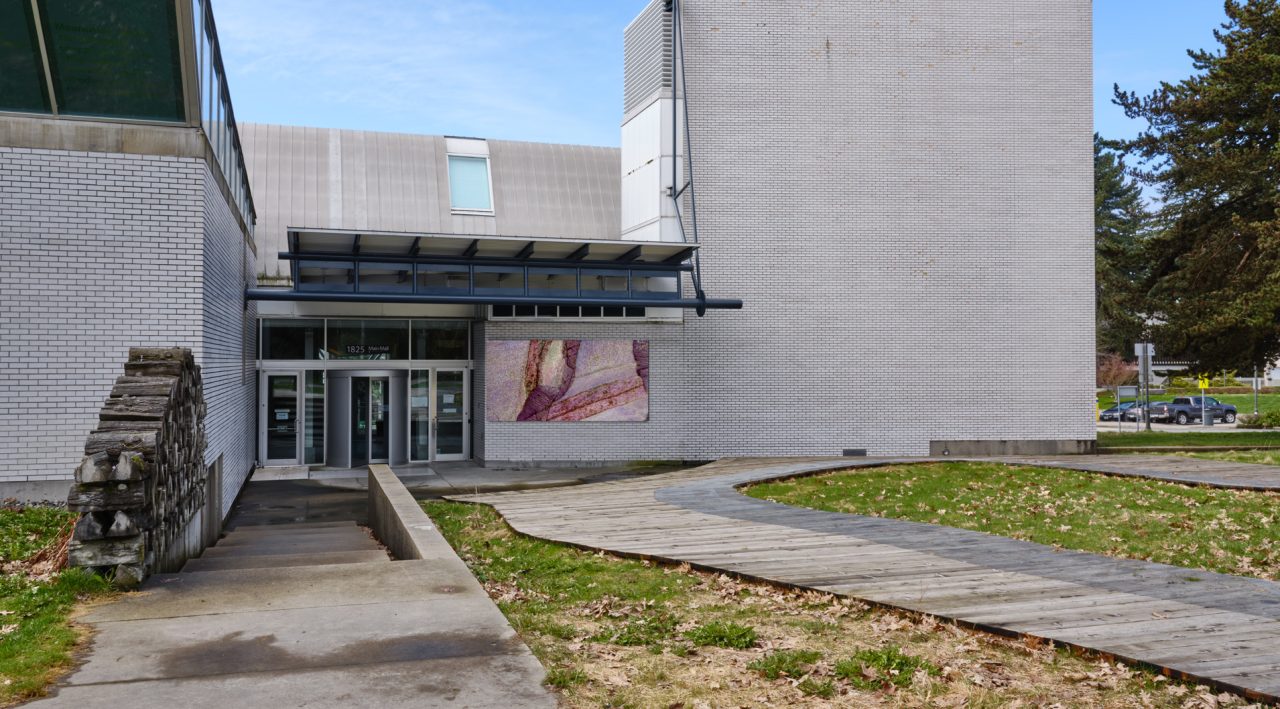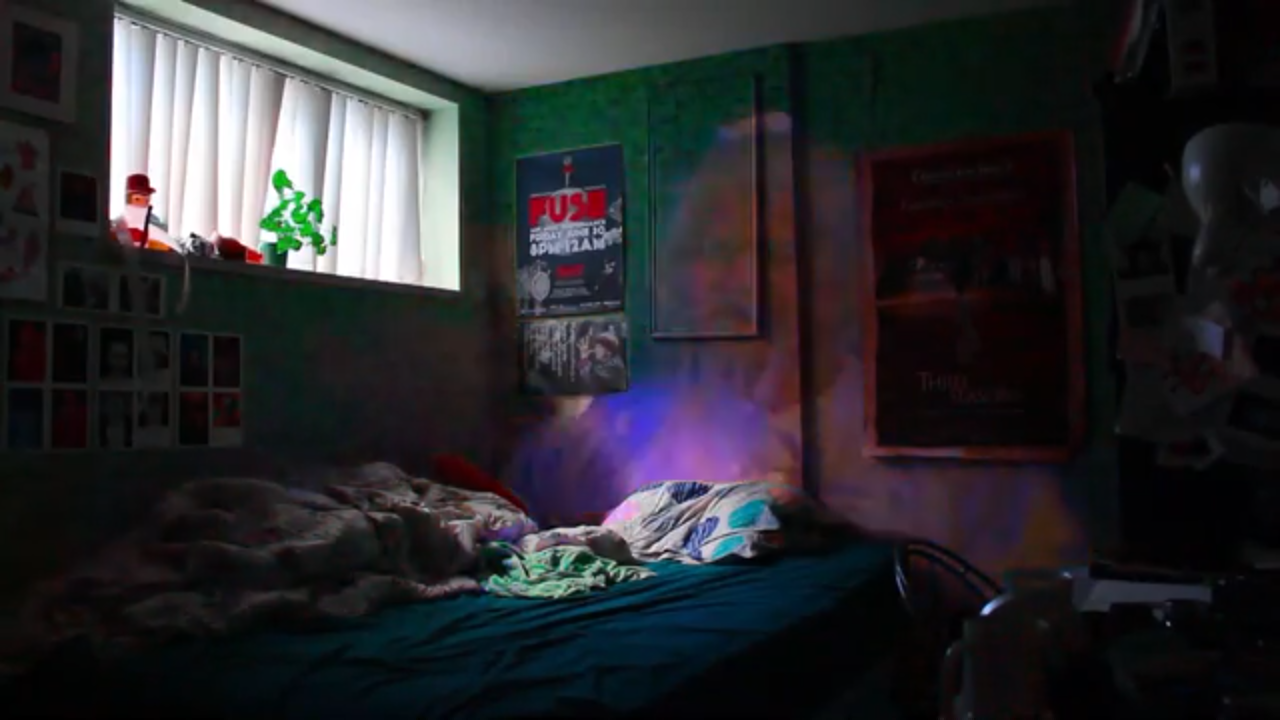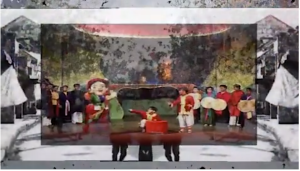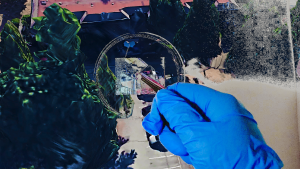11 Aug – 03 Sep 2025
Belkin Outdoor Screen
Outdoor Screen: On Home and Haunting
-
Adam Garnet Jones
Adam Garnet Jones is Cree-Métis and Danish from Amiskwacîwâskahikan (Edmonton). With a degree in film production from Ryerson University, Jones worked as a writer/director/producer for over a decade (Fire Song, Great Great Great, Amplify, Mohawk Girls, Cashing In). Throughout these years, Jones was involved in committees and initiatives to amplify the voices and opportunities of Indigenous content creators. In 2018, Adam left his work as a filmmaker in order to develop the role of Indigenous Initiatives Lead at Telefilm Canada and the Canada Media Fund. Jones joined the senior management team at APTN as Director of TV Content and Special Events in 2021. He is delighted to be closer to production again, nurturing, promoting and celebrating the very best in Indigenous storytelling. Jones is also a novelist and bead-worker, and calls Toronto home.
Read More
-
Hân Phạm
ArtistHân Phạm (Phạm Thụy Mai Hân) is an emerging Vietnamese filmmaker and visual artist from Saigon, Vietnam. Working with experimental haptic video/film, photography, and soundscape, Hân’s works think through the impermanence of memory, language, and history in relation to the constantly changing and dislocated landscapes, rooting in the inbetweeness of distance as space for reflection. They graduated from Simon Fraser University with a BFA in Film in 2021. Her personal works have been shown in various film and art exhibitions around Canada, notably including Vancouver International Film Festival, DOXA Documentary Film Festival, Vancouver Queer Film Festival, Pleasure Dome (Toronto), and The Cinematheque. As a visual and Multimedia artist, she has exhibited at grunt gallery, James Black Gallery and Massy Arts Gallery, and created works through residencies with Media Arts Committee’s Sound Art Residency, Vine Arts Festival, and UNIT/PITT. She is also an editor and a visual researcher and a frequent collaborator of the NFB, Canada Council, Chinese Canadian Museum, and Richmond Museum and Archives.
Read More
-
Luis Andrés Serrano
ArtistLuis Andrés Serrano is an interdisciplinary Latino artist residing in Surrey, BC. Serrano predominantly works through the context of memory, play, textures and systems. His current obsession lies in mapping, revisiting and re-contextualizing his memory and the surrounding memories that overlap with his own. Serrano visually gravitates towards layered and semi-distinguishable locations in his works to explore complex personal memories he aims to imperfectly recreate. His work has been screened at Gallery Gachet and XINEMA, and exhibited at the James Black Gallery.
Read More
-
Ogheneofegor Obuwoma
CuratorOgheneofegor Obuwoma (she/they) is a Nigerian artist, writer, and arts worker, currently Assistant Curator, Engagement at the Belkin. Obuwoma’s practice is grounded in traditions of care and reimagination and their work emerges from an investigation of questions around the body and the spiritual. Obuwoma has shown work at galleries and film festivals, and their writing has been published on Akimbo and independently. Obuwoma graduated from Simon Fraser University with a BFA in Film and Communications.
Read More
Hân Phạm
Once Upon a Time, 2020
digital video, 5 m
Luis Andrés Serrano
Homebody, 2024
digital video, 9 m
Adam Garnet Jones
Demonstration of indianness #31, 2006
digital video, 3 m 30 s
From 11 August to 3 September 2025, the Belkin’s outdoor screen will show On Home and Haunting daily between 9 am and 9 pm, a selection of films curated by Ogheneofegor (Fegor) Obuwoma. Join Obuwoma and filmmakers Hân Phạm and Luis Andrés Serrano on Thursday, 14 August 2025 at 6 pm for a conversation about their work.
On Home and Haunting is a film program on the Belkin outdoor screen that deals with the uncertainty of memory as a mode by which the artists conceive and construct their films. Using the language of “hauntology” (which deals with the ways social, cultural and political issues from the past haunt the present) and how it connects us to the unresolved state of capitalist violence across time and embedded into history, this program highlights three artists working within this realm of the indelible: Hân Phạm, Adam Garnet Jones and Luis Andrés Serrano. Aesthetically, the works of these artists are ghostly; they inhabit places of the past, only possible from the present. Film is a medium favourable for these hauntings. Formally, it allows that which is abstract and ambiguous to take shape in tangible ways and in many cases; a haunting can be political. “A Glossary of Hauntings” by Eve Tuck and C. Ree defines haunting as “the relentless remembering and reminding that will not be appeased by settler society’s assurances of innocence and reconciliation.” This definition asks us to expand our formal understanding of hauntings and what they tell us about life lived and the histories we emerge from.
The film Once Upon a Time (2020) by Hân Phạm deals with the ghosts of war and nostalgia in Sài Gòn, Vietnam, framing a time lived in the wake of atrocity and how that shapes daily life, memory and childhood. The film is established in the filmmaker’s bedroom, allowing for a space of nostalgia and apprehension as it connects popular entertainment to videos of the Vietnam War, asserting the home as an intimate place to understand the trepidations of history and time. Demonstration of Indianness #31 (2006) by Adam Garnet Jones, uses the filmmaker’s grandfather’s home videos from the 1950s to deal with the potential of the archive as a mode for gesturing toward erasure, and the ongoing tension settler colonization in Canada upholds. Thinking through documentation and anthropology, the halting or haunting in time in Jones’s film acts as a reluctant invitation and disruption of an anthropological gaze. Homebody (2024) by Luis Andrés Serrano brings us to an examination of the home, the site of classic haunting. The film begins in Serrano’s childhood home, through a distance created by a mix of visual fissures, petri dishes and personal family photos. These images are collaged on screen and projected through rooms in their home to balance the intimacy of the personal and an almost reverent privacy of the space of the home. The film addresses the artist’s childhood home in a neighbourhood undergoing threats of redevelopment.
These films operate at a point of friction in which the histories the filmmakers emerge from become a tangible and alterable moment in the present through which their stories are held and revisited. The lines of past and future become blurred as the films bring images to the present that challenge the fixity of the past. The films engage an expansive notion of the archive by using personal and collective histories through Google Maps, home videos, found footage, travelogues and family photographs. As their works depart from the space of home, we can question what radical thoughts the domestic might offer as a position from which to engage with the past. The hauntings the films enact by defying space and time are critical of the multiple instances of violence experienced—eviction, war, colonialism. The ambiguity that takes shape as blurred and jumbled images might be the moment of the turning, of the embodied ghostliness that is to come, or rather, that which is already enacted. Thinking about the multiple applications of the archive through which personal history might take form, this program highlights three films that inquire into the possibilities of intervening in archives and the power that a haunting might enact.
Adam Garnet Jones, Demonstration of Indianness #31 (still), 2006. Courtesy of Vtape.
Hân Phạm, Once Upon a Time (still), 2020. Courtesy of the Artist.
Luis Andrés Serrano, Homebody (still), 2024. Courtesy of the Artist.
IMAGE (ABOVE): Luis Andrés Serrano, Homebody (still), 2024. Courtesy of the Artist.
-
Adam Garnet Jones
Adam Garnet Jones is Cree-Métis and Danish from Amiskwacîwâskahikan (Edmonton). With a degree in film production from Ryerson University, Jones worked as a writer/director/producer for over a decade (Fire Song, Great Great Great, Amplify, Mohawk Girls, Cashing In). Throughout these years, Jones was involved in committees and initiatives to amplify the voices and opportunities of Indigenous content creators. In 2018, Adam left his work as a filmmaker in order to develop the role of Indigenous Initiatives Lead at Telefilm Canada and the Canada Media Fund. Jones joined the senior management team at APTN as Director of TV Content and Special Events in 2021. He is delighted to be closer to production again, nurturing, promoting and celebrating the very best in Indigenous storytelling. Jones is also a novelist and bead-worker, and calls Toronto home.
Read More
-
Hân Phạm
ArtistHân Phạm (Phạm Thụy Mai Hân) is an emerging Vietnamese filmmaker and visual artist from Saigon, Vietnam. Working with experimental haptic video/film, photography, and soundscape, Hân’s works think through the impermanence of memory, language, and history in relation to the constantly changing and dislocated landscapes, rooting in the inbetweeness of distance as space for reflection. They graduated from Simon Fraser University with a BFA in Film in 2021. Her personal works have been shown in various film and art exhibitions around Canada, notably including Vancouver International Film Festival, DOXA Documentary Film Festival, Vancouver Queer Film Festival, Pleasure Dome (Toronto), and The Cinematheque. As a visual and Multimedia artist, she has exhibited at grunt gallery, James Black Gallery and Massy Arts Gallery, and created works through residencies with Media Arts Committee’s Sound Art Residency, Vine Arts Festival, and UNIT/PITT. She is also an editor and a visual researcher and a frequent collaborator of the NFB, Canada Council, Chinese Canadian Museum, and Richmond Museum and Archives.
Read More
-
Luis Andrés Serrano
ArtistLuis Andrés Serrano is an interdisciplinary Latino artist residing in Surrey, BC. Serrano predominantly works through the context of memory, play, textures and systems. His current obsession lies in mapping, revisiting and re-contextualizing his memory and the surrounding memories that overlap with his own. Serrano visually gravitates towards layered and semi-distinguishable locations in his works to explore complex personal memories he aims to imperfectly recreate. His work has been screened at Gallery Gachet and XINEMA, and exhibited at the James Black Gallery.
Read More
-
Ogheneofegor Obuwoma
CuratorOgheneofegor Obuwoma (she/they) is a Nigerian artist, writer, and arts worker, currently Assistant Curator, Engagement at the Belkin. Obuwoma’s practice is grounded in traditions of care and reimagination and their work emerges from an investigation of questions around the body and the spiritual. Obuwoma has shown work at galleries and film festivals, and their writing has been published on Akimbo and independently. Obuwoma graduated from Simon Fraser University with a BFA in Film and Communications.
Read More
Related
-
News
14 Jun 2021
Outdoor Screen: An Extension of the Gallery

With the opening of the Image Bank exhibition on June 18, 2021, the gallery is pleased to launch the Outdoor Screen, a 4x2 metre outdoor screen curated with media works from the Belkin’s permanent collection and archive alongside work commissioned specifically for this platform.
[more] -
Event
Thursday, 14 Aug 2025 at 6 pm
Artist Talk: Hân Phạm and Luis Andrés Serrano

As part of the Belkin's outdoor screen exhibition On Home and Haunting, please join us for a talk with two of the exhibiting artists, Hân Phạm and Luis Andrés Serrano, centred around their respective films, Once Upon a Time (2020) and Homebody (2024). The conversation will be moderated by curator Fegor Obuwoma.
[more]


